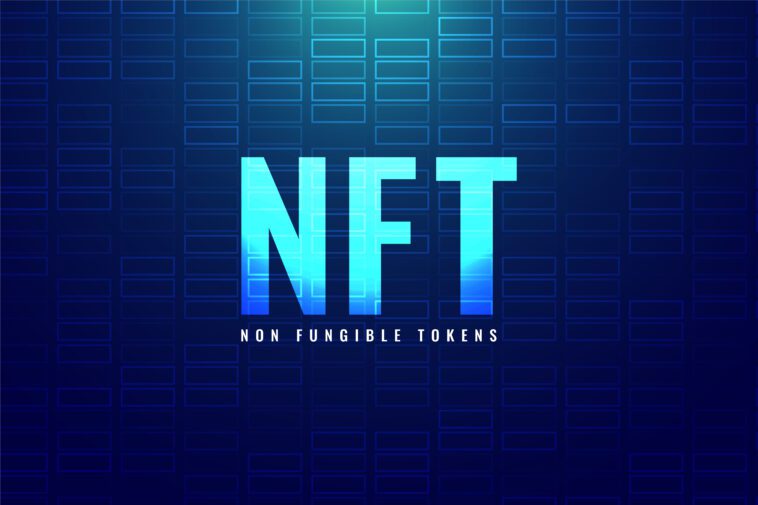Non-fungible tokens (NFTs) are a type of digital asset. They can be used as currency or investments.
An NFT’s value is determined by its unique identifier and the creator’s desire for scarcity. It may be issued in multiple copies or be one-of-a kind.
Non-fungible tokens (NFTs) are a type of digital asset
Non-fungible tokens (NFTs) are a new type of digital asset that allows you to prove your ownership over items like artwork, video clips and even virtual real estate. NFT marketplaces such as OpenSea, SuperRare and Rarible allow individuals to purchase and trade these NFTs.
They are unique, with unique identifying codes that make them impossible to replicate or duplicate. Furthermore, their rarity can add a sense of value in certain cases.
NFTs are revolutionizing how we view digital assets. While they can be similar to real-world items, they’re much safer and simpler to trade and exchange on the blockchain.
Some NFTs are based on existing products, like CryptoKitties – a decentralized app that lets users purchase and collect virtual cats. On the other hand, some are brand new digital creations sold through NFT platforms.
For instance, the NBA recently issued a non-fungible token called NBA Top Shot which is comprised of highlight video reels featuring famous basketball players. Dapper Labs digitizes these clips and sells them for an amount that corresponds to the value of the token as more people buy and trade it online.
Though tokenization is a relatively recent development, it represents an important step in making digital assets more accessible to those with less financial resources than physical objects. This model could serve as inspiration for other kinds of digital properties such as images or recordings.
NFTs are also a great way to share physical assets like paintings with more people. It’s similar to fractionalizing real estate: instead of purchasing the entire house, you can purchase just part of it.
While NFTs are still in their early stages, they are expected to become an increasingly popular form of digital assets in the future. Artists, developers and consumers alike should all find these exciting opportunities rewarding. Soon enough, NFTs will reach mainstream acceptance among collectors, investors and traders alike.
They are a form of digital art
NFTs (Networked Faraday Clocks) are digital artworks created and supported by blockchain technology. These art pieces are unique, cannot be copied or altered, and their owners retain full control over them.
NFTs, also known as Neural File Transfers (NFTs), are digital files with a unique identity and ownership verified on the Ethereum blockchain. This enables people to claim ownership over digital assets such as music, Tweets and images.
Artists have the option to sell their work with NFTs (Near Field Technology), which are a new way of monetizing digital artwork that bypasses art dealers. This may be especially advantageous for creatives struggling to make ends meet in the traditional art world.
However, NFTs as a form of digital art is not without controversy. One major concern is the energy consumption involved in creating and resale of these artworks.
Artists often face a major inconvenience when they must monitor how much electricity their studio consumes and then resell their NFTs using that same amount of energy. French artist Joanie Lemercier was shocked when his NFT sold within 10 seconds for thousands of dollars and used 8.7 megawatt-hours of energy!
Lemercier had mistakenly believed his NFTs to be eco-friendly, but the reality is that many of these pieces are not produced using renewable resources and often require a great deal of power for production.
Therefore, artists must take the time to carefully weigh their options before selling their NFTs online. Doing this will enable them to decide whether fixed pricing or auctions are best suited for them and select the most efficient method of selling their artwork.
Another important consideration for artists is deciding what percentage of their royalties they want to earn on resale of their NFTs. The higher this percentage, the more money they will receive from selling these works. Therefore, artists must be able to balance earning an income with safeguarding their artistic rights.
They are a form of currency
An NFT, short for non-fungible token, is a digital asset that cannot be exchanged for another type of currency due to its unique properties that cannot be replicated. NFTs can be used to represent any item such as digital art and collectibles, music or videos, even real estate.
Traditional currencies, which are fiat-based and printed with government-backed denominations, cannot be verified on a ledger like Ethereum’s. NFTs however are built upon blockchain technology and must only be issued on Ethereum or similar platforms. Through its ledger system, it becomes simple to prove who owns an NFT on your ledger – it just needs proof!
NFTs (Networked Financial Transactions) are a revolutionary form of currency that’s been gaining worldwide traction due to their appeal among both crypto investors and celebrities alike. These assets are programmable, capable of reacting to price changes on the blockchain, and they’re seeing widespread adoption.
There are various ways to utilize NFTs, but the most popular method is minting them as personal assets. This enables individuals to create immutable tokens linked directly to their wallet address.
They can retain ownership of the NFT forever without fear of theft or modification, while earning resale royalties when it is sold.
These royalties help them cover costs and ensure they can continue creating content for their followers. Furthermore, NFTs are supported by Ethereum’s blockchain so they can be tracked and verified on a public ledger.
NFTs (Networked Financial Tokens) are an emerging subcategory of the cryptocurrency market and represent digital ownership similar to artwork or collector’s items. They’re becoming a popular way for artists and designers to get paid for their work as well as being used as investment vehicles in projects.
NFTs come in many forms, from arts and GIFs to virtual avatar skins and designer wearables – even sports highlights and digital collectibles! These tokens can be created on various platforms like Ethereum and Flow.
There are various communities for NFTs, which enable owners to collaborate and support each other’s projects or showcase them to others. These usually have private Telegram channels or Discord servers where members can engage with one another and exchange information regarding their endeavors.
They are a form of investment
Non-fungible tokens (NFTs) offer an innovative approach to investing in digital assets. As a type of crypto that runs on a blockchain platform, NFTs have become increasingly popular with investors, traders and collectors.
NFTs (Network Fragmented Tokens) are digital assets that can be bought and sold on crypto marketplaces, similar to stocks or bonds. You’ll need a cryptocurrency wallet in order to buy or sell NFTs, though several marketplaces exist such as OpenSea, Mintable, Rarible and Foundation.
Some NFTs come with tangible rewards like invitations to events or bragging rights. Some even earn passive royalties when resold. Although these digital assets could become valuable components of anyone’s portfolio, they may not be suitable for everyone.
When NFTs are created, each one is assigned a unique identifier and linked directly to an address on the blockchain. This information is publicly accessible and allows for tracking back the original ownership of each token. Even if thousands of NFTs of an item are produced simultaneously, each will still have one owner who can be traced back to its creators.
An NFT’s value can be secured, especially in digital art and music. Since each NFT has a unique identifier and address, it makes it more difficult for anyone to duplicate or alter its content in any way.
An NFT owner can demonstrate their ownership of an asset by signing messages to that address with their private keys. Doing so, they can demonstrate exclusive rights over the content of that NFT and will not allow others to copy it without their approval.
NFTs, like any type of investment, carry risks and can be highly volatile. You should be aware of these hazards and consult an expert before investing in NFTs.
NFTs are relatively unregulated and thus, potentially vulnerable to fraudulence or scammers. You should therefore exercise caution with digital safety protocols like protecting your passwords and account names.



